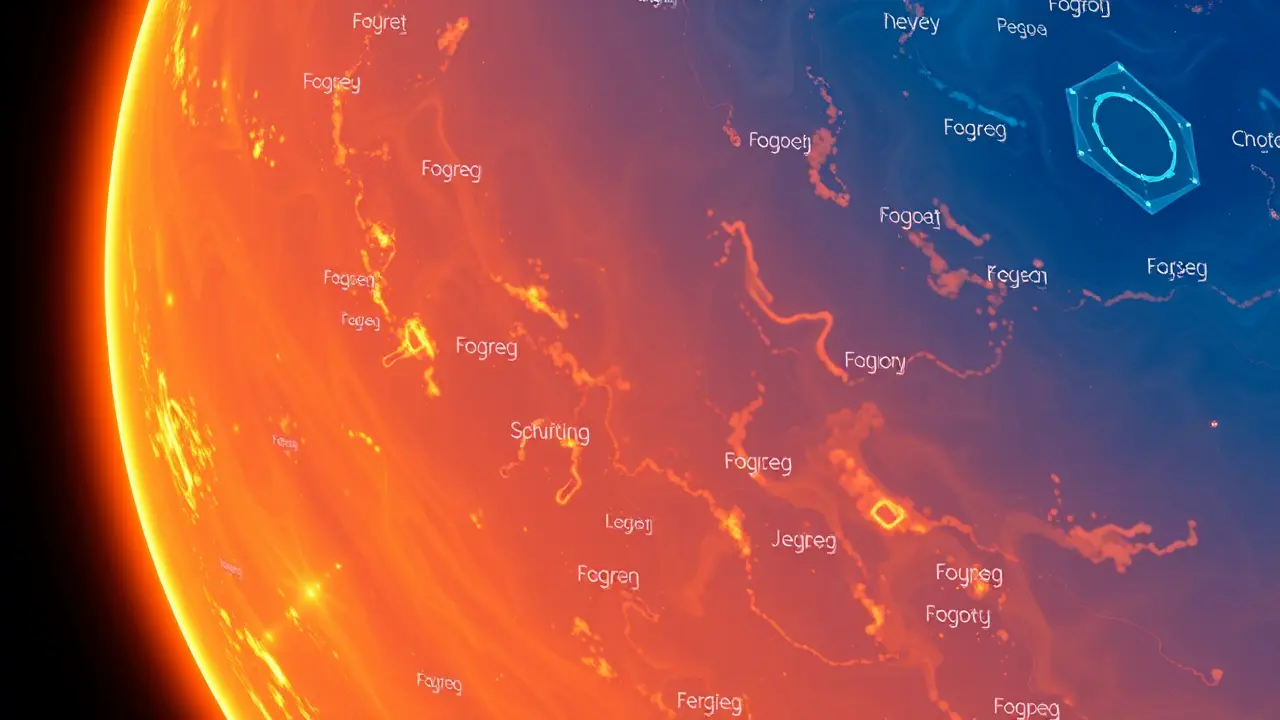
Sciencespace & astronomyExoplanets and Habitable Worlds
JWST captures stunning 3D view of a planet’s scorching atmosphere
TH
Thomas Green
19 hours ago7 min read
The James Webb Space Telescope has just pulled off a feat that would make even the most seasoned astrophysicist's jaw drop, creating the first-ever 3D atmospheric map of a world beyond our solar system. The subject is WASP-18b, a behemoth gas giant that makes our own Jupiter look tame, an 'ultra-hot Jupiter' locked in a scorchingly close orbit with its star.Using a pioneering technique known as eclipse mapping, astronomers have essentially given us a weather report from an alien sun, revealing a world of extreme and violent contrasts. Imagine a planet with such staggering temperature gradients that on its dayside, the heat is so intense it rips water molecules apart, while its nightside simmers at a comparatively cooler, yet still hellish, inferno.This isn't just a static picture; it's a dynamic, three-dimensional visualization of atmospheric flows and thermal structures, allowing us to see how heat is ferociously redistributed—or fails to be—across this cosmic crucible. The implications are staggering, offering a new lens through which to understand the complex physics governing atmospheric dynamics on gas giants, a field that has long relied on models and simulations.This breakthrough with WASP-18b serves as a critical proof-of-concept, demonstrating that we can now peer into the climatic hearts of these distant worlds with a clarity previously reserved for science fiction. The methodology itself is a marvel of modern astronomy, meticulously observing the infinitesimal dips in starlight as the planet passes behind its star, allowing scientists to decode the thermal fingerprint of different atmospheric layers.It’s a technique that harkens back to the earliest planetary observations but is supercharged by Webb's unparalleled infrared sensitivity. The data doesn't just tell us it's hot; it paints a portrait of a world being actively sculpted by brutal stellar radiation and gravitational forces, a laboratory for extreme physics operating on a planetary scale.As we stand on the precipice of this new era of exoplanetology, the natural and thrilling progression is to turn Webb's golden eye toward smaller, rocky worlds, the so-called super-Earths that may reside in the habitable zones of their stars. The ability to map their atmospheres in such detail could one day reveal the chemical signatures of life itself, transforming a point of light in the sky into a world with weather, climate, and perhaps even biospheres.This single observation of WASP-18b is more than just a data point; it's a fundamental shift in our capability to explore, moving from simply detecting exoplanets to truly characterizing them as complex, dynamic worlds. It validates decades of theoretical work and technological ambition, proving that the tools we've built can deliver on the promise of revealing the universe's most intimate secrets. The journey to understand our place in the cosmos has just accelerated, and with each new map charted by Webb, we are not just looking at the stars—we are learning to read the stories written in their planets' skies.
#featured
#James Webb Space Telescope
#exoplanet
#WASP-18b
#3D atmospheric map
#eclipse mapping
#alien weather
Stay Informed. Act Smarter.
Get weekly highlights, major headlines, and expert insights — then put your knowledge to work in our live prediction markets.
Related News
© 2025 Outpoll Service LTD. All rights reserved.
